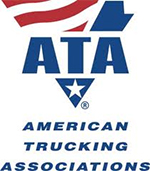Truckers Highlight Regulatory, Fatigue Issues After Tracy Morgan/Walmart Crash
In the wake of the incident, trucking groups largely spoke to the ways that current regulations lead to more driver fatigue, not less.
The crash that flipped the limo bus Morgan and three fellow comics were riding in appears to have been caused by a truck driver who hadn’t slept in more than a day. The trucking industry says the incident highlights the delicate balance among fatigue, federal regulations, and tight deadlines.
The deadly crash that nearly took the life of 30 Rock star Tracy Morgan is drawing new attention to a common problem for truck drivers: fatigue.
The 45-year-old Saturday Night Live alum, one of four people injured in the multivehicle crash last week, is in critical but stable condition at Robert Wood Johnson University Hospital in New Brunswick, New Jersey. The fifth passenger, his mentor, comedian James “Jimmy Mack” McNair, died as a result of the accident.
The crash led to charges of vehicular homicide and assault by auto against Kevin Roper, a 35-year-old Walmart driver who had been awake for more than 24 hours before the crash, according to the criminal complaint, though a Walmart representative told CNN that Roper had complied with federal limits on road time.
In the wake of the incident, trucking groups largely spoke to the ways that current regulations lead to more driver fatigue, not less:
Are The Rules Too Strict?
Federal regulations limit drivers to 14-hour shifts, with a 30-minute break every eight hours. The rules, updated in 2013, are meant to make it easier for drivers to spend time resting, but in practice, they make it harder to hit shipment deadlines, according to the Owner-Operator Independent Drivers Association. “If the regulations are so strict that a driver can’t stop and take a break or take a nap when they need to, then I don’t know how you can conclude anything other than the regulations have made highways less safe,” OOIDA Executive Vice President Todd Spencer told NBC News.
Rest Is Important
The American Trucking Association, meanwhile, agreed that the rules need to change, but emphasized that when drivers are off the road taking breaks, they should use that time for the purpose it’s meant for—to rest. “The hours-of-service rules—whether they are the current regulations, the pre-2013 rules, or the rules with changes we hope to see as a result of congressional action—only place limits on driving and on-duty time and require that between work periods drivers take a minimum of 10 consecutive hours off-duty,” ATA President and CEO Bill Graves said in a statement. “But they do not dictate what drivers do during that off-duty period.
No rule can address what a driver does in his or her off-duty time. The industry—including ATA, our member fleets, our state associations and the millions of safe, professional truck drivers on the road today—strongly believes that drivers must take advantage of their off-duty periods for rest and that drivers should not drive if they are fatigued.” Graves also noted ATA’s support for the use of electronic logging devices to track drivers’ compliance with regulations and the use of electronic speed governors to limit the speed of large trucks to 65 miles per hour.
Despite the apparent role of fatigue in the crash involving Morgan, Graves emphasized that just 10 percent of truck crashes involve some sort of fatigue. The association “believes we need to do far more to address the other 90 percent of crashes,” he said.
Note: The post Truckers Highlight Regulatory, Fatigue Issues After Tracy Morgan Crash appeared first on Associations Now.
More SC24/7 Coverage on Hours-of-Service (HOS)













